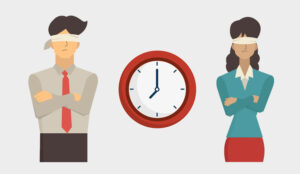In this part of the Contact Centre Manifesto series, we look at two key questions. Does reaching for some targets consume more resources than it saves? Is the answer a more customer-centric approach?
In the contact centre, almost everything is continually measured. Most targets come down to the numbers that you want either to increase or decrease.
- Customer-Centric Metrics
- First Contact Resolution
- Quality Scores
- Customer Satisfaction
- Customer Effort
- Net Promoter Score
- Customer Lifetime Value
- Multichannel Deployment
Stop the Obsession with AHT
Moving away from AHT as an agent metric has been the clarion call of the industry for several years. But is that call really being heard? Many contact centres are still having trouble getting rid of the security blanket of AHT, despite mounting evidence of the damage it can do to customer and agent experience and contact centre performance.
WFO Contact Centre Consultant Christine Stubbs told us, “The agent’s responsibility is to give good first contact resolution to the customer. The scheduling pressure doesn’t belong to them, it belongs to the real-time analyst.
“If the forecast team has got the forecast wrong and there are huge queues, why would you want to disturb the customer experience by letting agents know? It’s not their fault, and they’re not in control of that.”
Yet, despite this warning, according to one of our polls, almost half of contact centres still use the metric to target agents.
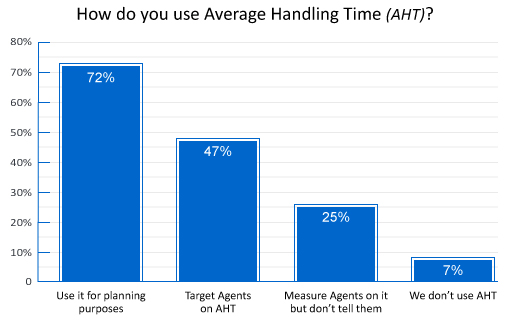
(This poll is sourced from the piece: 47% of Contact Centres use Average Handling Time (AHT) to Target Agents)
Efficiency vs. Effectiveness
The simple reason for bad metrics like AHT is the idea that the contact centre is nothing more than a call-handling factory. And while customer experience initiatives place increasing focus on the best areas of contact centre practice, bad practice still abounds within many businesses.
Fundamentally, the role of the contact centre needs to adapt to the customer-centric environment of modern business. Far from being a place to simply ‘handle’ (or appear to handle) complaints, contact centres have the opportunity to be among the leading departments of any business.
“Instead of thinking ‘we have 1,000 customers coming on next week, how can we resource to meet that?’ the question should be, ‘we have 1,000 customers coming on next week, how do we make the take-on process so fantastic that they don’t need to phone us?” said David Baughan, Customer Experience Consultant at NTT Data.
It a simple equation really – customer loyalty is valuable, and good service is the bedrock of that loyalty.
Can Efficiency Savings Be Inefficient?
At first glance, it makes sense that spending less time or money on an activity leads to an overall saving. In our personal lives that’s mostly true. But in the contact centre there are numerous costs related to driving apparent efficiencies.
Agent Attrition
No other office-based work carries the same rate of attrition as the contact centre, and much of this results from the factory-like environment.

When agents are compelled to meet targets which are at odds with the customer experience (like AHT), it puts them under stress.
The question is: which is more expensive? A slight increase in the length of calls, or the current 25% rate of attrition?
Customer Experience
Customers demand a high level of service – possibly higher than ever – so trying to get them off the phones quickly or offering a less than great experience will push them towards your competitors.
A survey for American Express demonstrated that 70% of customers will switch to a more expensive product if they believe the service will be better.
This is where contact centres need to work with the wider business, promoting ideas like Customer Lifetime Value (CLV) to demonstrate how higher investment in good service does in fact save money.
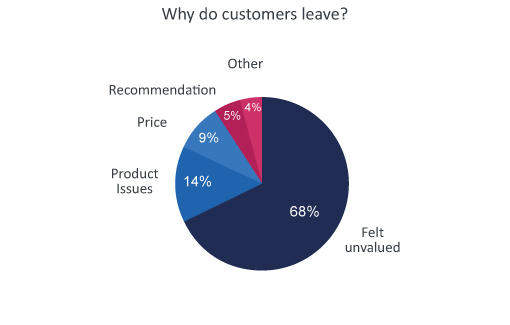
Contact Volume
Limiting the resources available for each contact also reduces the likelihood that the contact will be properly resolved. Your agents need to be able to take time to solve the query once and for all. First Contact Resolution (FCR) might be the most useful measure of this.
According to our poll, we found that over half of the industry regularly deals with 10-24% repeat contacts, as highlighted below.
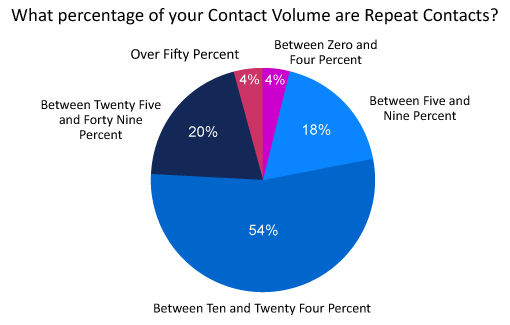
(This poll is sourced from the piece: 10-24% of Contact Volumes is Generally Made Up From Repeat Contacts)
What Is the Right Mix of Metrics?
According to Goodhart’s law, when a measure becomes a target, it ceases to be a good measure. What that means is that trying to influence a metric distorts its ability to describe something usefully.
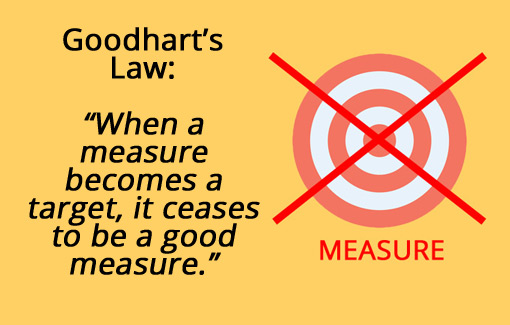
A metric is a tool which helps business achieve a specific result. It’s important to bear this in mind, because too often metrics are treated as ends in themselves.
What might the most useful metrics be? Research from Deloitte and Touche shows that businesses with an active focus on customer-centric measures are 60% more profitable than their peers. That’s a compelling statistic, but is it enough to guide contact centre practice?
According to BGP Consultant James Dodkins, the answer is yes: “if you understand your customers, you understand the outcomes they need to achieve.
“You build the experience to deliver those needs – you build the process to deliver the experience – you build the tech that delivers the process – you align your metrics within the process. It’s about working backwards, and I think that’s where some businesses fall short.”
Customer-Centric Metrics
The contact centre is not going to escape the need to closely measure its activities and success. The only way to become customer-centric is to reassess what is measured based on customer needs, and use that as a guide to success.
Traditional metrics like cost per call are not going anywhere, but the way they are used is changing. The price of petrol is important to you, but it’s not why you own the car.
The measures of businesses resource investment are still significant, but they can’t dictate how the service is run.
Businesses need to arrive at metrics that measure the things which are important to their customers.
First Contact Resolution
Although there is no standard method for determining the rate of First Contact Resolution (FCR), it is a well-understood and widely deployed metric. Customer Satisfaction (CSat) typically drops 35-45% when a second call is needed, so it’s worthwhile having this measure in place.

FCR Positives
1. It Aligns With Customer Experience
The most important element of FCR is that it measures what is happening for the customer rather than the business. While the number or length of calls is useful for planning, FCR tells you something specific about the experience that you are giving customers.
It can also teach important lessons about the quality of agents, processes and systems.
2. FCR Incentivises Proactive Support
There are very few customer issues that agents won’t have heard before. In fact, for most contact centres, between 5 and 10 call types account for 80% of all calls.
There are similar patterns to follow-up calls, and agents usually know the processes well enough to predict what the next issues will be.
But when they have other calls waiting, or they’re against the clock with AHT, tackling downstream problems might not be a priority. FCR shifts the incentives and promotes a beginning-to-end service.
3. It Can Lower Total Call Volume
FCR can also contribute usefully to contact centre costs. The thinking is quite simple: if you understand the drivers of follow-up calls, you can prevent them.
This is almost certainly a gain in most situations, even though it might increase AHT. Why? Because most calls involve a significant amount of time spent not helping the customer.
That includes things like security questions, understanding the problem, and navigating computer systems.
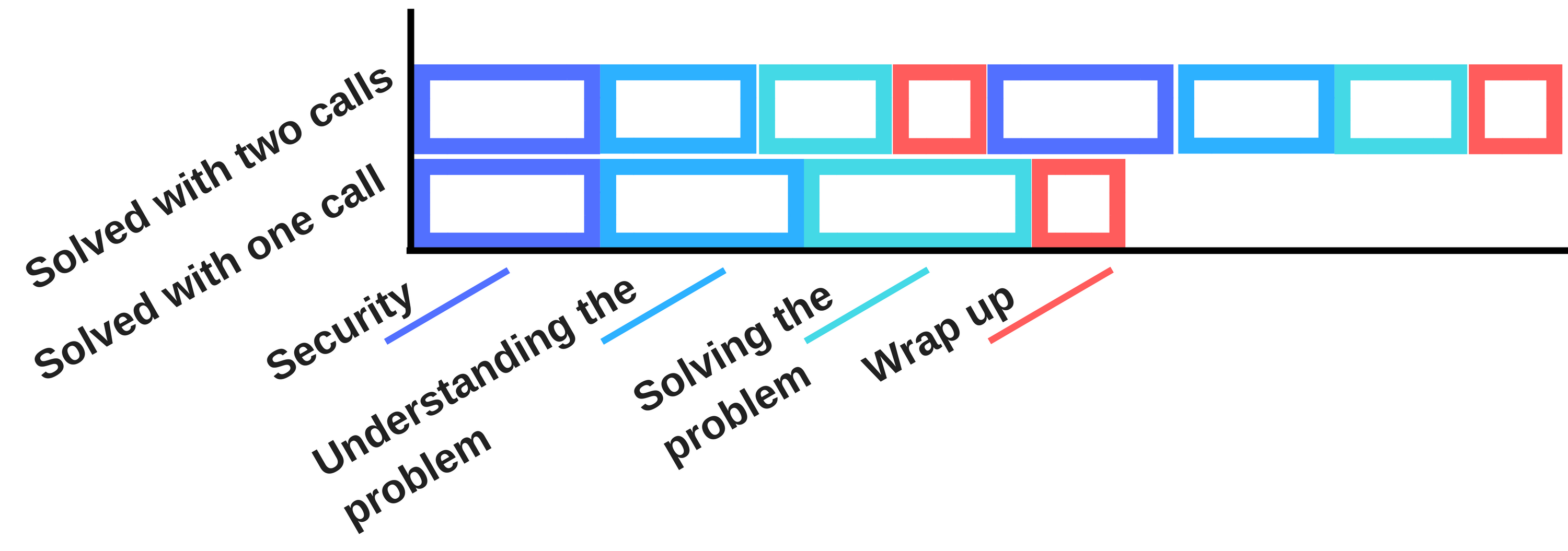
FCR Negatives
1. It Doesn’t Account for the Full Customer Experience
While it looks like a great metric in isolation, it’s easy to think of situations where an FCR figure might be deceptive.
Customers using multiple siloed channels is one example. While it might appear that a situation required just one call, it might really have required a social media enquiry, an email, and then a call.
Depending on how FCR is counted, there are a number of ways customers might be missed. In a lot of cases, these will also be the customers who have had the worst experience.
2. It Only Meets a Minimum Expectation
There is also an issue with incentivising towards the most basic customer expectation – essentially, setting the bar too low.
Customers in most situations fully expect their issue to be resolved in a single contact. This is the difference between customer expectations and business expectations. Where the business sees performance across many thousands of interactions, the customer can only judge one experience – their own.
“The point of FCR isn’t success – it’s failure. The fact you’ve had to put something right is failure.” Thanks to James Dodkins
3. Data Gathering Can Be Shaky
Contact centres have to decide how they are going to collect information on FCR.
First, the centre has to define FCR. This includes factors like how close two contacts need to be, how to count transfers between departments, and whether outbound follow-up calls are included.
Next, the centre has to decide how to measure this. There are several options, with some centres simply asking customers if they are happy that the situation is resolved. This data is easily distorted.
Otherwise, centres can track repeat customer contacts within CRM. This is more robust, but might miss calls that abandon in IVR or queueing.
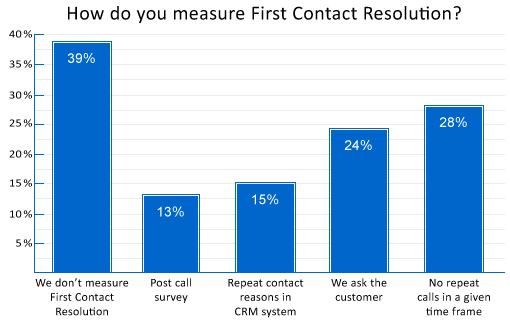
(This poll was sourced from the piece: Over 60% of Contact Centres Measure First Call Resolution)
Follow the link to find out: How to Calculate First Contact Resolution
Quality Scores
Without looking closely at agent performance, there’s simply no way that contact centres can improve the way that they interact with their customers. Looking directly at the quality of calls – based on elements like tone and the accuracy of the information supplied – is the most direct challenge to metrics like AHT.
Measuring quality and feeding back to agents demonstrates to them the importance that is placed on handling calls correctly – it is entirely up to managers and coaches to set the tone.
A word of caution, though. Some well-intentioned quality scoring systems become box-ticking exercises very quickly and end up having limited impact. The scoring system needs to be reviewed on a regular basis to ensure it promotes progress and remains a helpful tool rather than a burden.
Click here to find out more about increasing quality scores
Customer Satisfaction
This staple of customer experience measurement is one of the most established ways to learn about customer experience. By asking for quick and easy feedback, businesses can harness a lot of information in a relatively short period of time, as well as making surveying CSat a regular part of the operation.

The most useful survey regimes allow customers to provide verbatim comments. This helps customer to feel that their input is important, but also means that businesses can use the resource to design customer experiences directly around key customer likes and dislikes.
Net Promoter Score
Net Promoter Score (NPS) puts a laser focus on a form of satisfaction but looking specifically at the likelihood that a customer will promote a business to the friends.
Not only is this data useful in its own right, it can be a very useful number to communicate the impact of customer service initiatives throughout the business and at the boardroom level.
The output from an NPS survey is an integer between -100 and +100. The number on its own can be over-simplistic, but combined with a breakdown of what scores were received and why, it can form the basis for dramatic changes to customer engagement.
Customer Effort Score
Effort is measured on a scale in the much the same way as customer satisfaction. FCR is an aspect of this, as are standard metrics like queuing time and talk time.
It is also possible to gather anecdotal information about customer effort. This kind of data is hard to process and score, but it can be invaluable.

Consider a relatively common problem that is barely measured: a customer needs assistance, calls three times throughout the day, and finally gets through in the evening.
The only metric that would show up in is call abandon rate, which says nothing about the related customer sentiment.
For more on this metric, read our article: How to Calculate Customer Effort
Customer Lifetime Value
Customer Lifetime Value (CLV) is something that no enterprise can do without. In the simplest terms, CLV is an assessment of the amount of revenue the average customer will generate in all the time they buy from a business.
“When I think about the companies that I work with that are award-winning, they all have somebody at the call centre that understands how the rest of business works and spends time with the other areas of the business. The contact centre takes its goals from the goals and metrics that the wider business runs on.” Thanks to David Baughan
While it’s clearly a useful business tool, what relevance does it have to the contact centre? Well, it actually gives customer interactions a very useful piece of contextual information.
One of the most quoted statistics online is that a 5% increase in retention can lead to a 25% to 85% increase in profits. With this information in mind, it becomes absolutely transparent that customer welfare in every interaction is vitally important.
Calculating the value to business of the customer makes the case for funding service and retention much more palatable.
Calculating CLV
There are competing methods for understanding CLV. The most basic multiplies the average annual customer spend by the number of years the customer purchases from the business.
This is a useful way to understand what CLV means, although it is too simple an approach to be meaningful. To get closer to true lifetime value, the calculation needs to factor in the changing value of capital over time, the margin on customer expenditure, and the customer retention rate.
A more advanced version of the calculation:

Let’s say that the gross margin per customer lifespan is £2,200, the retention rate is 65%, and the rate of discount is 10%. Our equation would look like this:

For a CLV of £3,177.
Proactive contact centre leaders should collaborate with other business departments to:
- Calculate as precise a CLV as possible
- Decide what level of investment is appropriate for retention activities
- Divide the investment between departments, proportional to their impact on customer retention
This is the clearest path to allocating resources for customer service, and the most likely mechanism to ensure the contact centre is adequately funded.
To find out more, read our article: Calculating Customer Lifetime Value – The Formula
Map Customer Effort Across Channels
Customers are increasingly willing to use channels other than phone to resolve their issues. This can represent a useful overlap of customer effort and the cost of providing services.
By mapping the customer journey through all possible service options, it is simple for businesses to identify pain points. Not only should every service be easy to use, but, ideally, moving between them should be easy as well.
Rick Kirkham of Customer TouchPoint advises that “If your customer is on your website and it doesn’t work, they could have a webchat with you. But if they decide to ring you, what info is coming across? They’re going to have to spend time on your IVR and then explain the problem to you.
“The effort involved in that is very high, it’s frustrating, and it makes the problem worse. There are emerging technologies that take digital journeys through to a phone call, and I think that will be the major disruptor in the next couple of years.”
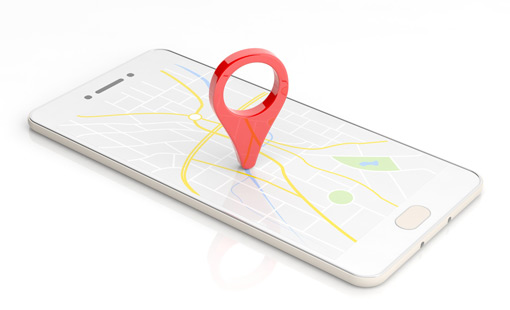
The design of different channels should also take into account what they are most commonly used for. After a difficult beginning, consumers now have a better understanding of the kind of problems they can reasonably address via social media.
The same kinds of lessons can be applied to every facet of customer support – the design has to reflect both the behaviours you are hoping to drive and what the customers want from a resource.
“You have to look at the nature of the contact. If it’s at all emotional, people will still want to have a conversation via telephone, because doing it via technology doesn’t give them that sense of completion.
“For the more transactional stuff people will self-serve, provided it’s easy for them. If they feel like they’re in an automated system, or they get the sense that you’re keeping them waiting, any chance of influencing them towards a different channel is gone.
“When they get through to somebody, they’re going to tell you about it, putting another minute or two on your handling time, and costing you money.” Rick Kirkham
This article forms part of The Contact Centre Manifesto series
The following ideas have been discussed with the industry experts pictured below:

[left to right] David Baughan, Customer Experience Consultant at NTT Data, James Dodkins, Principal Consultant at BPG, Rick Kirkham, Managing Director at Customer Touch Point, Christine Stubbs, WFO Contact Centre Consultant at Maintel
Author: Robyn Coppell
Published On: 22nd Jun 2016 - Last modified: 20th Sep 2017
Read more about - Customer Service Strategy, Contact Centre Manifesto, Editor's Picks, Metrics





